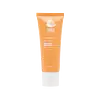What's inside
What's inside
 Key Ingredients
Key Ingredients

 Benefits
Benefits

 Concerns
Concerns

 Ingredients Side-by-side
Ingredients Side-by-side

Water
Skin ConditioningGlycerin
HumectantPropylene Glycol
HumectantBetaine
HumectantGlycereth-26
HumectantIsopropyl Myristate
EmollientSqualane
EmollientDimethicone
EmollientSodium Ascorbyl Phosphate
Antioxidant1-Methylhydantoin-2-Imide
Skin ConditioningHydroxyethyl Acrylate/Sodium Acryloyldimethyl Taurate Copolymer
Emulsion StabilisingOlea Europaea Fruit Oil
MaskingHydroxyacetophenone
Antioxidant1,2-Hexanediol
Skin ConditioningAcrylates/C10-30 Alkyl Acrylate Crosspolymer
Emulsion StabilisingArginine
MaskingPanthenol
Skin ConditioningPhenoxyethanol
PreservativeParfum
MaskingSodium Benzoate
MaskingPotassium Sorbate
PreservativePolysorbate 60
EmulsifyingSorbitan Isostearate
EmulsifyingDisodium EDTA
Ethylhexylglycerin
Skin ConditioningAlthaea Officinalis Root Extract
Skin ConditioningSodium Hyaluronate
HumectantCI 19140
Cosmetic ColorantGeraniol
PerfumingLimonene
PerfumingLinalool
PerfumingWater, Glycerin, Propylene Glycol, Betaine, Glycereth-26, Isopropyl Myristate, Squalane, Dimethicone, Sodium Ascorbyl Phosphate, 1-Methylhydantoin-2-Imide, Hydroxyethyl Acrylate/Sodium Acryloyldimethyl Taurate Copolymer, Olea Europaea Fruit Oil, Hydroxyacetophenone, 1,2-Hexanediol, Acrylates/C10-30 Alkyl Acrylate Crosspolymer, Arginine, Panthenol, Phenoxyethanol, Parfum, Sodium Benzoate, Potassium Sorbate, Polysorbate 60, Sorbitan Isostearate, Disodium EDTA, Ethylhexylglycerin, Althaea Officinalis Root Extract, Sodium Hyaluronate, CI 19140, Geraniol, Limonene, Linalool
Water
Skin ConditioningKaolin
AbrasiveCetearyl Alcohol
EmollientGlyceryl Stearate
EmollientPEG-100 Stearate
Salicylic Acid
MaskingPhenoxyethanol
PreservativeBenzyl Alcohol
PerfumingSodium Stearoyl Glutamate
CleansingParfum
MaskingDisodium EDTA
Ethylhexylglycerin
Skin ConditioningDehydroacetic Acid
PreservativePropanediol
SolventGlycerin
HumectantButylene Glycol
HumectantSodium Hydroxide
BufferingGlycyrrhiza Glabra Root Extract
BleachingNelumbo Nucifera Flower Extract
Skin ConditioningNymphaea Coerulea Flower Extract
Skin ConditioningCI 17200
Cosmetic ColorantWater, Kaolin, Cetearyl Alcohol, Glyceryl Stearate, PEG-100 Stearate, Salicylic Acid, Phenoxyethanol, Benzyl Alcohol, Sodium Stearoyl Glutamate, Parfum, Disodium EDTA, Ethylhexylglycerin, Dehydroacetic Acid, Propanediol, Glycerin, Butylene Glycol, Sodium Hydroxide, Glycyrrhiza Glabra Root Extract, Nelumbo Nucifera Flower Extract, Nymphaea Coerulea Flower Extract, CI 17200
Ingredients Explained
These ingredients are found in both products.
Ingredients higher up in an ingredient list are typically present in a larger amount.
Disodium EDTA plays a role in making products more stable by aiding other preservatives.
It is a chelating agent, meaning it neutralizes metal ions that may be found in a product.
Disodium EDTA is a salt of edetic acid and is found to be safe in cosmetic ingredients.
Learn more about Disodium EDTAEthylhexylglycerin (we can't pronounce this either) is commonly used as a preservative and skin softener. It is derived from glyceryl.
You might see Ethylhexylglycerin often paired with other preservatives such as phenoxyethanol. Ethylhexylglycerin has been found to increase the effectiveness of these other preservatives.
Glycerin is already naturally found in your skin. It helps moisturize and protect your skin.
A study from 2016 found glycerin to be more effective as a humectant than AHAs and hyaluronic acid.
As a humectant, it helps the skin stay hydrated by pulling moisture to your skin. The low molecular weight of glycerin allows it to pull moisture into the deeper layers of your skin.
Hydrated skin improves your skin barrier; Your skin barrier helps protect against irritants and bacteria.
Glycerin has also been found to have antimicrobial and antiviral properties. Due to these properties, glycerin is often used in wound and burn treatments.
In cosmetics, glycerin is usually derived from plants such as soybean or palm. However, it can also be sourced from animals, such as tallow or animal fat.
This ingredient is organic, colorless, odorless, and non-toxic.
Glycerin is the name for this ingredient in American English. British English uses Glycerol/Glycerine.
Learn more about GlycerinParfum is a catch-all term for an ingredient or more that is used to give a scent to products.
Also called "fragrance", this ingredient can be a blend of hundreds of chemicals or plant oils. This means every product with "fragrance" or "parfum" in the ingredients list is a different mixture.
For instance, Habanolide is a proprietary trade name for a specific aroma chemical. When used as a fragrance ingredient in cosmetics, most aroma chemicals fall under the broad labeling category of “FRAGRANCE” or “PARFUM” according to EU and US regulations.
The term 'parfum' or 'fragrance' is not regulated in many countries. In many cases, it is up to the brand to define this term.
For instance, many brands choose to label themselves as "fragrance-free" because they are not using synthetic fragrances. However, their products may still contain ingredients such as essential oils that are considered a fragrance by INCI standards.
One example is Calendula flower extract. Calendula is an essential oil that still imparts a scent or 'fragrance'.
Depending on the blend, the ingredients in the mixture can cause allergies and sensitivities on the skin. Some ingredients that are known EU allergens include linalool and citronellol.
Parfum can also be used to mask or cover an unpleasant scent.
The bottom line is: not all fragrances/parfum/ingredients are created equally. If you are worried about fragrances, we recommend taking a closer look at an ingredient. And of course, we always recommend speaking with a professional.
Learn more about ParfumPhenoxyethanol is a preservative that has germicide, antimicrobial, and aromatic properties. Studies show that phenoxyethanol can prevent microbial growth. By itself, it has a scent that is similar to that of a rose.
It's often used in formulations along with Caprylyl Glycol to preserve the shelf life of products.
Water. It's the most common cosmetic ingredient of all. You'll usually see it at the top of ingredient lists, meaning that it makes up the largest part of the product.
So why is it so popular? Water most often acts as a solvent - this means that it helps dissolve other ingredients into the formulation.
You'll also recognize water as that liquid we all need to stay alive. If you see this, drink a glass of water. Stay hydrated!
Learn more about Water